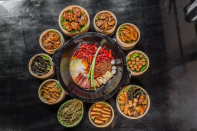Truth matters. Community matters. Your support makes both possible. LAist is one of the few places where news remains independent and free from political and corporate influence. Stand up for truth and for LAist. Make your year-end tax-deductible gift now.
What You Should Eat On New Year's Day For Good Luck
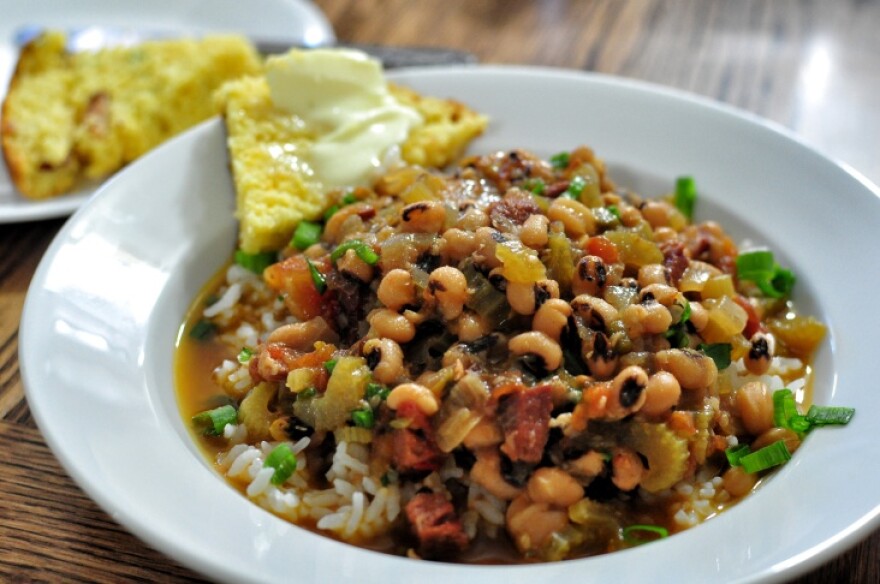
Editor's note: This story was first published in 2018 and continues to be popular with readers at the start of each new year, so we have updated it and are republishing it. Wishing you prosperity in 2024!
Nearly every culture has traditions about what you should eat to ensure good luck in the new year. And by "good luck," we mean money, because most of these foods will supposedly bring you wealth in the new year:
Hoppin' John
There's an old Southern saying, "Peas for pennies, greens for dollars and cornbread for gold." All three are good luck foods. We're fond of Hoppin' John: black-eyed peas stewed with spices and a ham hock. History says, "The first recipes for Hoppin' John appear in cookbooks that date back to the 1840s, although the mixture of dried peas, rice and pork was made by Southern slaves long before then." This dish is perfect on top of a bed of rice with a side of collard greens and a slice of cornbread. It's all the good luck you need in a single meal.
Oliebollen

Oliebollen, which literally translates to oil balls, is a traditional Dutch treat. They're basically dense donut holes, sometimes studded with currants or raisins, and covered in powdered sugar. In the Netherlands, they're eaten on New Year's Eve, often from mobile food carts.
Ozoni
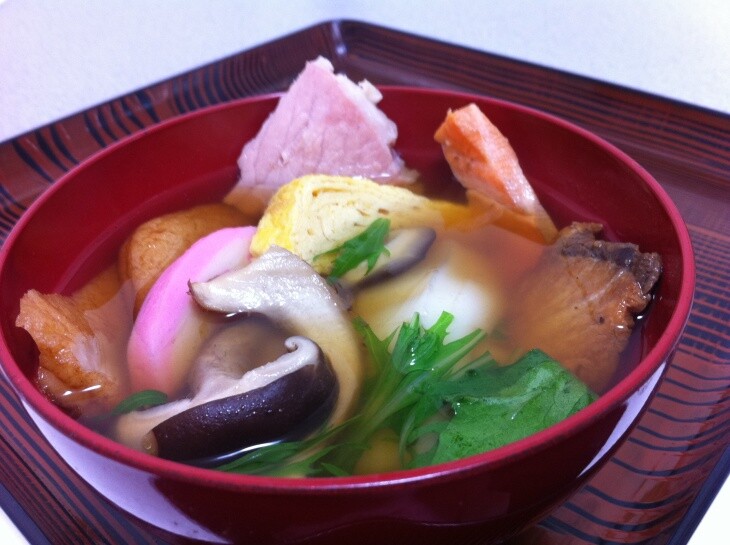
In Japan, the good luck dish for Oshogatsu (New Year's) is ozoni, a dashi broth with fish cakes, vegetables and those gooey, chewy rice cakes known as mochi. Ozoni preparation varies from region to region but Saveur says the mochitsuki tradition involves "pounding on a sticky mass of rice placed in a granite mortar" while someone turns the mochi between each blow. Japan also has plenty of other New Year's culinary traditions including medicinal sake and soba noodles, which represent resilience and strength.
Buñuelos
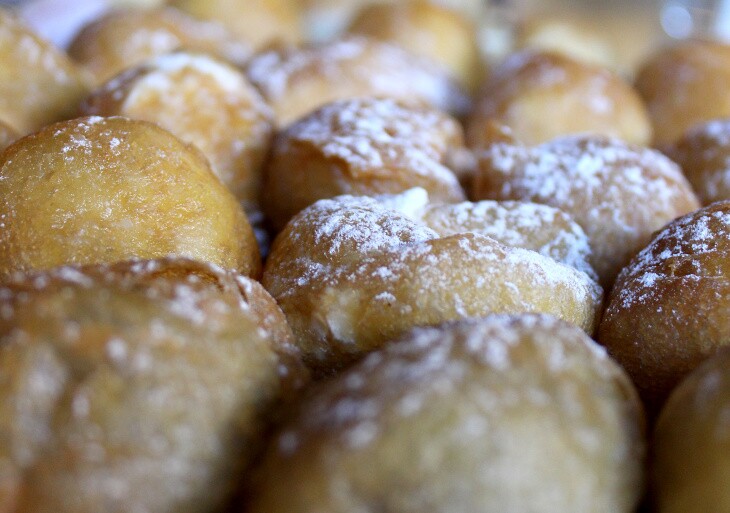
In Mexico, especially in Oaxaca, the new year involves eating buñuelos, crisp fritters sprinkled with cinnamon sugar or drizzled with a sweet syrup. Sometimes, after people eat their buñuelos, they smash their plate to symbolize making a break with the past.
A dozen grapes

"Eating 12 grapes at midnight on New Year's Eve is both a tradition and a superstition in Spain," says Food Republic. One grape for each month because you want every month to be lucky, right? They don't have to be special grapes. Standard table grapes will do.
Lentils and pork
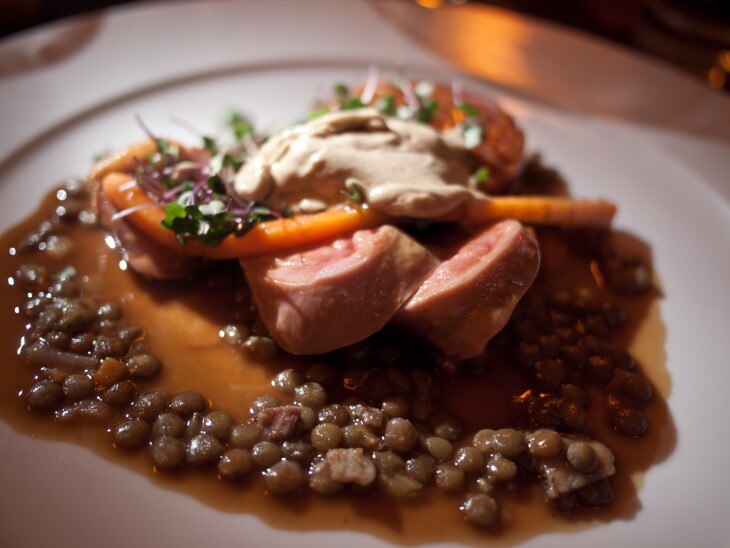
"Italians eat lentils on New Year's for wealth and prosperity because the flat legumes were believed to resemble Roman coins," according to Serious Eats. They're traditionally served with cotechino, a supersized pork sausage that's sliced and slowly simmered with the lentils.
Sabzi Polo Ba Mahi
Persian new year, known as Nowruz, is celebrated on the first day of spring. The main course at a Nowruz luncheon will usually be sabzi polo ba mahi, a dish of rice and green herbs, typically served with fish. The green herbs symbolize fruitfulness while the fish represents good luck. There are many other dishes at a Persian new year's feast, including asheh reshteh (a hearty noodle soup that's supposed to help you succeed in life) and kookoo sabzi (a souffle made with green herbs and vegetables).
Pickled herring

"In Germany, Poland and Scandinavia, it's believed that eating herring at the stroke of midnight will ensure a year of bounty," reports MNN. Sounds good but maybe do your kissing before your fish-eating.
Pomegranate

In Greek tradition, people hang a pomegranate, a symbol of fertility and prosperity, above their front door. At midnight on New Year's Eve, they smash the fruit against the door. The more seeds fall out, the more luck and fertility you'll have.
Dumplings

Want to be lucky in the Chinese new year, which is celebrated in February and is also known as the spring festival? You've got your pick. Eat dumplings and spring rolls for wealth, fish for increased prosperity and the sweet rice balls known as tangyuan for family togetherness. You've also got lots of other options.
Sticky Rice Cakes

On Tết, or Vietnamese New Year, also celebrated in February, people often eat bánh chưng and bánh tét, sticky rice cakes filled with meat or beans and wrapped in leaves. Bánh chưng are square-shaped, to represent the Earth, while bánh tét are cylindrical, to represent the moon. Other new year's foods include pork, red sticky rice (red is considered a lucky color) and dried candied fruits known as mứt.
Sauerkraut

At midnight on New Year's Eve, Germans wish each other "prosit neujahr" ("may the new year turn out well"). Before the big moment, they eat the fermented cabbage dish known as sauerkraut, which supposedly brings blessings and wealth. "Before the meal," according to the German Food Guide, "those seated at the table wish each other as much goodness and money as the number of shreds of cabbage in the pot of sauerkraut."



